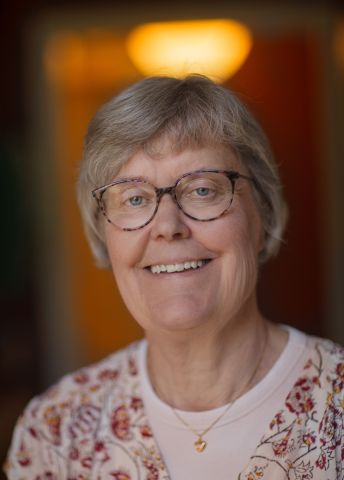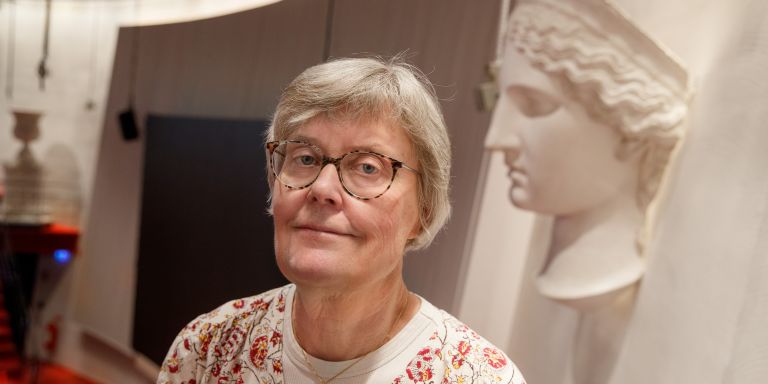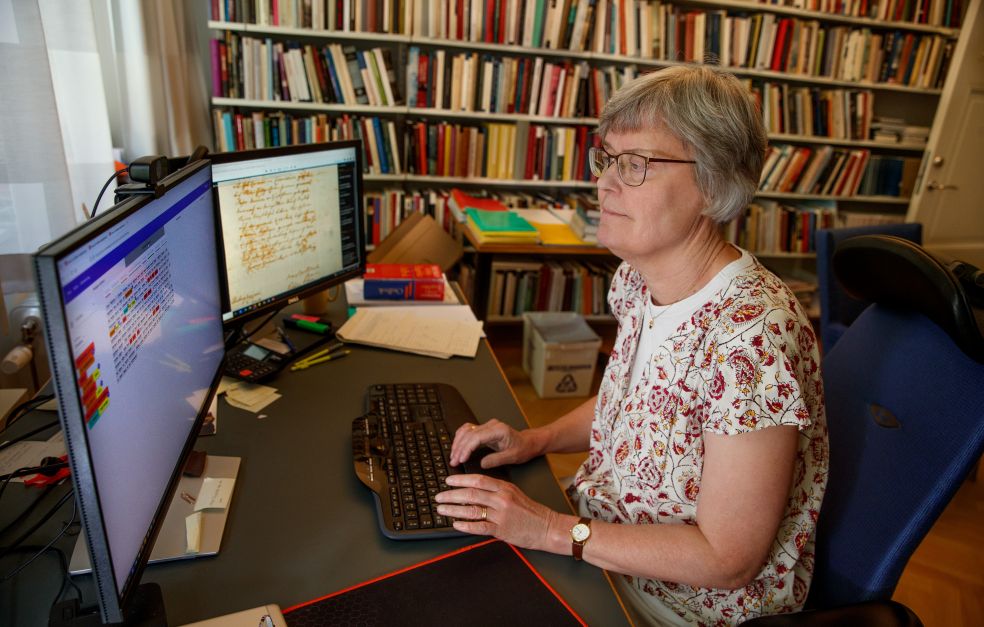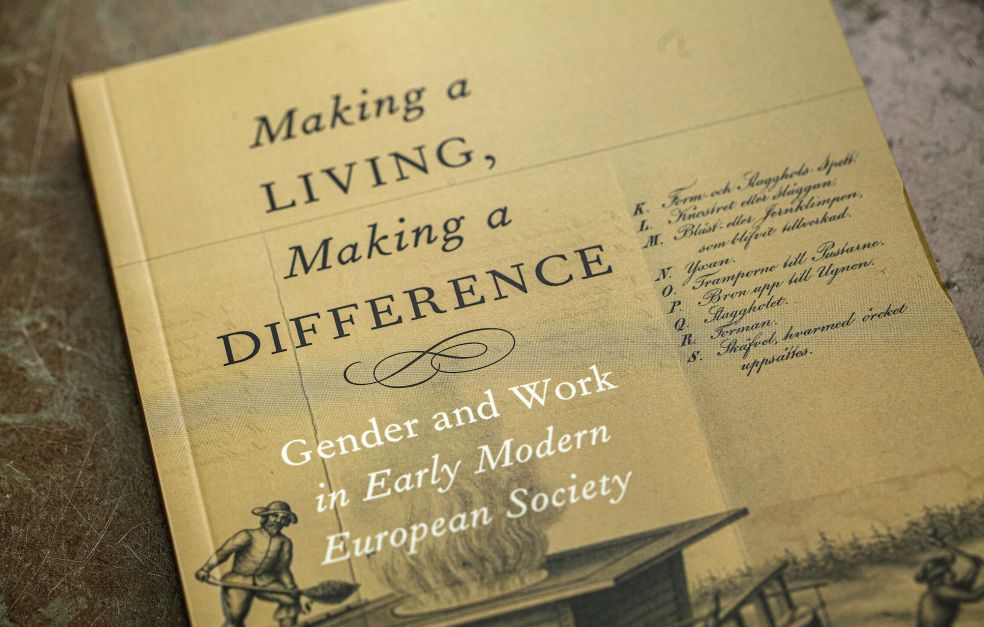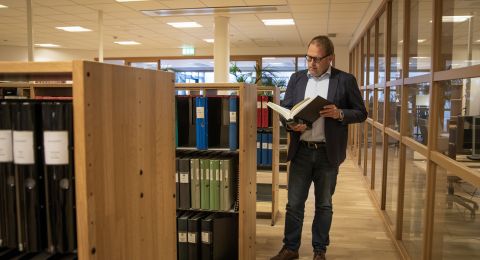Sweden has rich historical archives, but it has been difficult to come to grips with people’s everyday work and ways of making a living in historical times. Occupational titles do not say much about the specific tasks in which women and men were engaged, as Maria Ågren, professor of history at Uppsala University, explains:
“People might have a title such as cobbler or mayor, but in reality they often spent their time doing quite different things. The same applies today. My own title is that of professor, but it doesn’t really say anything about how I spend my days.”
Descriptive verb phrases
Her curiosity led to a project in 2009 entitled “Gender and Work”, which the Wallenberg Foundations supported. To delve into people’s working lives at grassroots level, the researchers developed the “verb-oriented method.”
They have compiled a database at present comprising over 45,000 verb phrases clearly describing everyday work activities in the past, such as “look after children”, “chop wood”, and so on. These phrases have primarily been obtained from court records.
“We have gained a comprehensive picture of working life throughout society, not only for certain professional categories or classes within society,” Ågren explains.
There has been a long-held misconception that women and men lived and worked in separate spheres, but this is a perception that needs to change, in Sweden as well as in many other countries.
“We find both women and men in all types of work: women working in the forest or transporting heavy loads, and men taking care of children, the sick and the elderly.”
In the first phase of the project the researchers studied the period 1550–1799 using source material from the whole of Sweden as it then was. One key finding was that marital status and age rather than gender impacted the jobs that people did. Married people of either sex had greater access to resources and could decide the work that others did.
The second phase focused on a partly overlapping period: 1720–1880.
“That period covers the time around the death of Charles XII of Sweden until the advent of trade unions,” says Ågren.
In this stage the source material comes from the town of Västerås and surrounding rural areas, and consists of court records and diaries, as well as parish records, which enable the researchers to ascertain the age and marital status of individuals.
The home as a workplace
The research shows that both women and men performed a substantial portion of their work at home during this period.
“We see that the home was an important place of work for both sexes, which challenges our latter-day view of a strict division between home and work,” Ågren says.
It is not unexpected that married women had higher status than unmarried women, but the plentiful textual materials at our disposal reveal this pattern very clearly. We were surprised by the strength of our findings.
Work in the home was multifaceted, and might include both paid and unpaid elements. Women worked more often in their own home, but also performed paid household services in the homes of others. Men tended to work more in other people’s homes, for example as carpenters or painters.
During this period marital status and age remained more important factors than gender in the context of work. This pattern continued into the 19th century, notwithstanding the emergence of new bourgeois ideals limiting the public role of women.
“We see surprisingly few changes. Division of labor continued to be flexible. Sometimes, when necessary, men could do work normally associated with women, and vice versa,” Ågren says.
Puncturing prejudice
The customary idea of the woman being confined to the home seems to be exaggerated, at least in Sweden. Perhaps earlier research was too heavily influenced by the 19th century debate on ideas and literature.
“It may also be because the research was too heavily influenced by British society, which differed from that in Sweden.”
Not until the late 1800s do the researchers note a clearer distinction between the work done by women and men. The change is attributed to the transition from an agrarian society to an industrial one. Increasing numbers of people became wholly or partly landless, which rendered them more dependent on income in the form of wages.
“The employer often decided who should do what and what work was suitable for women and men respectively,” Ågren explains. “It can also be seen that great emphasis was placed on keeping the sexes apart from each other in the early factories.”
Spreading the word
The large scale of the project is unusual in the humanities, and has been made possible by a grant under the Wallenberg Scholar scheme. The findings are now being disseminated via books and conferences. This has led to a breakthrough for the verb-oriented method.
“Now we want to refine the methods and concepts we have developed so they can be used on material in other countries.”
In the third phase three researchers have been recruited to the project team to carry out archival studies in northern Norway, Poland, and Portugal. The studies are designed to provide comparative materials, based on dimensions such as serfdom in Poland, Catholicism in Portugal and living conditions for the Same people in northern Norway.
The research also contributes perspectives to contemporary discussions about organization and gender roles in working life.
“As an historian, I cannot prove definite cause and effect, but I believe the greater equality and flexible trends in modern-day Swedish working life have interesting historical roots,” Ågren says.
Text Nils Johan Tjärnlund
Translation Maxwell Arding
Photo Magnus Bergström
